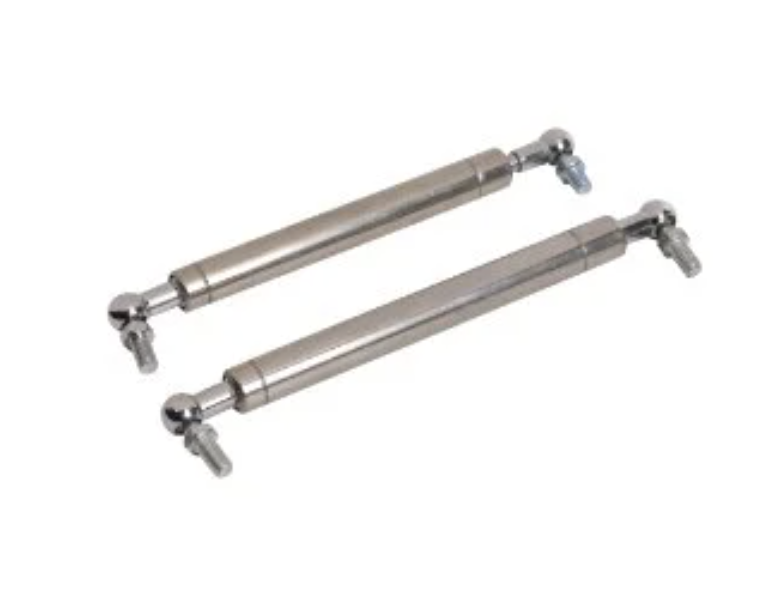If you are interested in our products ,please contact our team
Compressed gas is used in gas traction springs, sometimes referred to as gas springs or gas struts, to produce a regulated force. To support, raise, or hold weights in a safe and controlled manner, these springs are frequently employed in a variety of industrial and commercial applications, including automotive, aerospace, medical, and furniture.
We shall outline the operating concept, applications, and drawbacks in this article.

A cylinder filled with pressurized nitrogen gas, a piston rod, and a piston head makes up a gas traction spring. The nitrogen gas is compressed or expanded by the piston head when the piston rod is extended or retracted, which produces a force that prevents the piston rod from moving.
The size of the piston head, the volume of nitrogen gas, and the length of the piston rod all affect this force. Gas traction springs are excellent for a variety of applications because they can be made to deliver a range of forces and strokes.
Gas traction springs are employed in numerous commercial and industrial settings, including:
1. Automotive: To provide regulated lifting and holding forces for automobile applications such as tailgates, hoods, and doors, gas traction springs are used. Moreover, sunroofs and convertible roofs employ these springs to modify the seats.
2. Medical: Gas traction springs are used to provide regulated motion and placement in medical applications such as hospital beds, examination tables, and surgical lighting. Moreover, prosthetic limbs and medical equipment both use these springs.
3. Furniture: Gas traction springs are used to offer controlled motion and placement in a variety of furniture applications, including recliners, office chairs, and adjustable beds.
4. Aircraft seats, landing gear, and cargo doors are just a few of the uses for gas traction springs in the aerospace sector. The safety and dependability of the aircraft are ensured by these springs, which offer controlled forces and motion control.

The following are some possible drawbacks of gas traction springs:
Gas traction springs are susceptible to temperature changes, especially in the case of high temperatures. The gas spring's performance and dependability can be impacted by extreme heat or cold, which could result in decreased force or even failure. Gas traction springs must be carefully chosen to match the application's operating temperature range.
Gas traction springs may not be as adjustable as conventional mechanical springs, although they can be made to provide a variety of forces and strokes. In some circumstances, particularly for rare or specialized applications, it may be difficult to accomplish highly specific force or motion requirements with gas traction springs.
Special installation and maintenance techniques may be necessary for gas traction springs. To ensure optimum performance and longevity, for instance, correct mounting orientation, alignment, and lubrication may be required. An improper installation or disregard for maintenance standards might cause the gas spring to prematurely wear out, operate poorly, or even fail.
Gas traction springs can be more expensive than conventional mechanical springs, especially in applications requiring high force or great precision. The price of the gas spring itself, along with any other parts or accessories required for installation, may raise the overall cost of the application.
A flexible and dependable spring mechanism, gas traction springs are employed in a wide range of industrial and commercial applications. To learn more or to order your gas traction springs, get in contact with us.